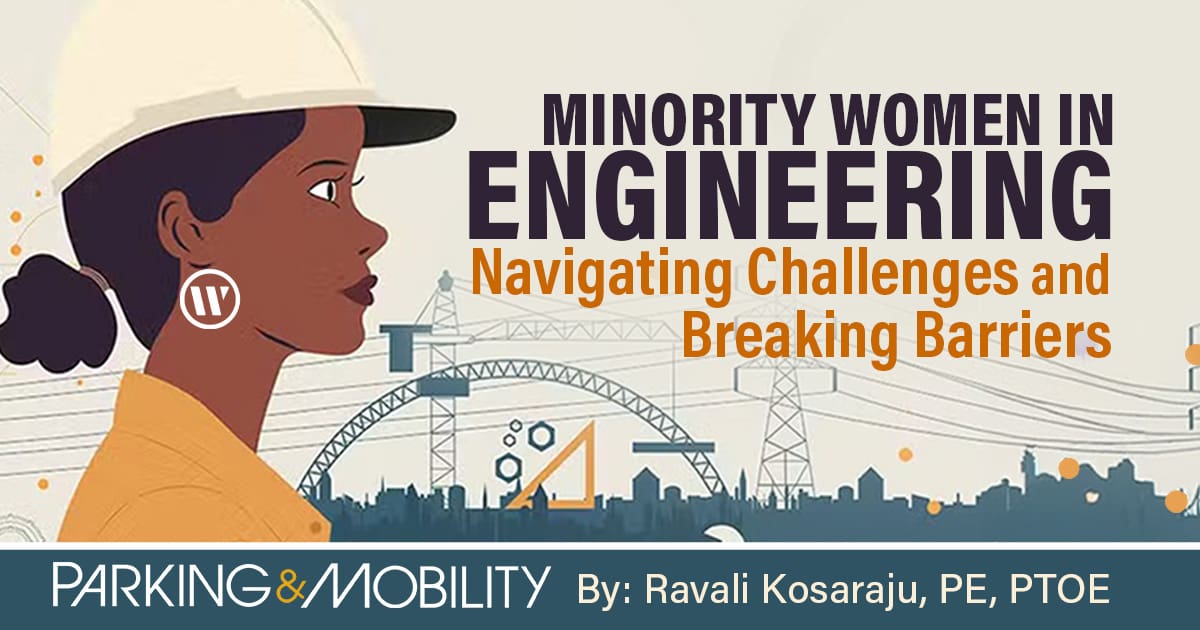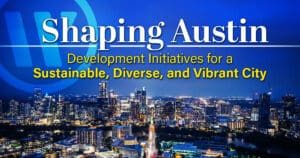
WGI Unleashed Episode 89: Lyndsey Duty, Environmental Scientist
On the latest episode of the WGI Unleashed podcast, we sit down with Lyndsey Duty, one of WGI’s Environmental Scientists based out of our Tampa, FL office!
Learn from award-winning professionals — explore our whitepapers, blogs, and the latest industry updates.
Join our dynamic organization of engineers, land surveyors, landscape architects, environmental scientists, and architects!
Talk to a market leader today! We’ll answer any questions you have about our professional services.

By Ravali Kosaraju, PE, PTOE
There are many exciting opportunities for minority women once they enter the field of civil engineering. Historically a male-dominated discipline, women—especially women of color—are breaking through barriers and making strides toward greater representation. While challenges still exist, the resilience, talent, and determination of women in this field are driving significant progress.
Growing up, post-secondary education, specifically engineering, was a natural choice for me. I never had to convince my family about it or worry about being unable to attend because there wasn’t enough money for tuition. After all, both my parents had college degrees, and my mom graduated from electronics engineering, so I was naturally drawn to engineering. I did learn through several conversations over the years that this is not the case for many others. Less than 30% of my 2008 graduating class were women, and only 10% came from minority backgrounds. STEM fields were not as accessible to women, especially women of color, due to societal and familial biases, lack of role models, and exposure opportunities.
Even with all the right educational opportunities and a strong family support system, when I entered the workforce, I faced the reality that (civil) engineering was male-dominated.
On a chilly Fall morning, as a 25-year-old female engineer of color with a hopeful outlook, I had to confront a contractor on the job site. The contractor, a towering man in his 50s who’d been in the field longer than I had been alive, didn’t hold back on reminding me of that fact. The issue? The materials being used didn’t match the approved drawings. What started as a simple conversation quickly turned into an argument, with both of us getting frustrated and eventually storming off the site. Later, my supervisor had to step in, sending a strongly worded email, reminding the contractor to keep things professional and follow contract terms. I felt humiliated that I couldn’t manage and resolve the issue on my own, in a calm manner. That one interaction shaped how I carried myself among men at work, especially if they appeared older than me. Over the years, I gained valuable tools and techniques for tackling individuals who overstep boundaries and having meaningful conversations to prevent those situations from recurring, both for myself and others.
This was also 13 years ago, and we’ve made some progress in understanding how gender, family, and cultural backgrounds play a role in how we show up in our respective roles in engineering. In conversations with a young female engineer of color in her early 20s, I learned that her experience has been slightly different (thankfully). In Elizabeth De Leon’s own words:
“Women of different racial backgrounds face varying expectations or stereotypes from their peers, even when they have the same educational qualifications. However, these biases are becoming less common as more minority women prove their expertise and leadership abilities, gaining recognition for their technical skills and innovative contributions to the industry. I’ve seen this reflected most when sharing stories with colleagues and women leaders. Most of the time, my generation’s experiences involve a more welcoming environment in which mentors, allies, and champions provide an avenue from which to learn and grow our skills.”
Despite the progress being made, societal biases and expectations still present challenges for women in civil engineering. Whether it’s navigating judgments about “likeability” or facing assumptions about capabilities, many women encounter outdated perceptions. These biases may differ based on ethnicity, which can make the experience for minority women even more complex.
Mentorship is instrumental in helping women, especially those from marginalized groups, break through barriers. Organizations like the Society of Women Engineers (SWE) and the National Society of Black Engineers (NSBE) are providing vital resources such as mentorship programs, scholarships, and networking opportunities. These organizations help women build confidence and establish belonging in a sometimes-isolating field. De Leon noted that she has personally benefited from these communities and knows many others who have also found the guidance and encouragement they needed to succeed.
Women can and are redefining leadership. Traditionally, leadership roles have been associated with certain masculine traits, such as assertiveness and authority. However, today’s women leaders bring their unique qualities to the table, balancing independence, goal setting, and assertiveness with empathy and collaboration. They are proving that leadership doesn’t have to conform to outdated standards and that women are strong, effective leaders while staying true to their values and identities.
Develop, grow, and support each other. While everyone has unique interests, responsibilities, and backgrounds, our shared willingness to find common ground and draw from each other’s strengths allows us to grow both as individuals and as professionals. Being part of a community that embraces diversity is crucial to fostering an inclusive environment where women feel empowered to thrive.
Ravali Kosaraju, PE, PTOE
Director of Mobility | WGI
Ravali Kosaraju P.Eng., PE, PTOE, is the Director of Mobility at WGI Inc. and a member of the IPMI Allyship & Equity Advisory Group.
To access the original article, please click here

WGI is a national design and professional services firm leading in technology-based solutions for the construction of public infrastructure and real estate development. At WGI, we’re providing Tomorrow’s Infrastructure Solutions Today.

On the latest episode of the WGI Unleashed podcast, we sit down with Lyndsey Duty, one of WGI’s Environmental Scientists based out of our Tampa, FL office!

WGI’s San Antonio team laced up their running shoes and braved the rain to take on the iconic Rock and Roll 5K – Discover how they turned challenges into triumphs in this memorable event recap!

With a legacy of supporting, empowering, & inspiring women in transportation, the WTS Central Florida’s Annual Awards & Scholarship Banquet was nothing short of a night to remember.

Discover how Austin is transforming urban development with proposed zoning changes, inclusive housing initiatives, and creative space preservation—all while embracing growth and sustainability.

Texas Medical Center made $78M from parking last year. Why haven’t its busiest garages been upgraded in years?

Discover how WGI helped bring Lively Lane to life—a vibrant community in San Marcos that blends sustainable design, live/work townhomes, and natural beauty to create the perfect balance of urban convenience and serenity.
You’ve been searching for a place like WGI. We look forward to meeting you soon.
Sign up to receive emails to hear our latest news and achievements in our monthly newsletter.
Enter your zip code, and we’ll personalize your experience with local projects, office locations, team members, and more.
WGI supports its associates with meaningful opportunities for growth, strong benefits and perks, while we work collaboratively with clients and co-consultants to shape and improve communities.






WGI is a dynamic organization with opportunities nationwide for engineers, land surveyors, landscape architects, environmental scientists, and architects.